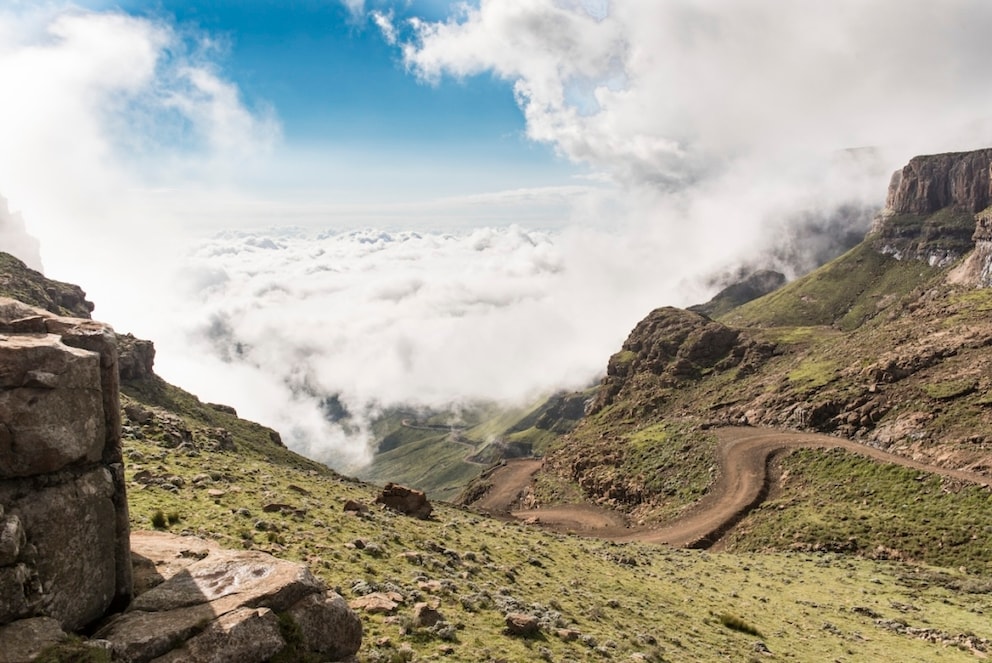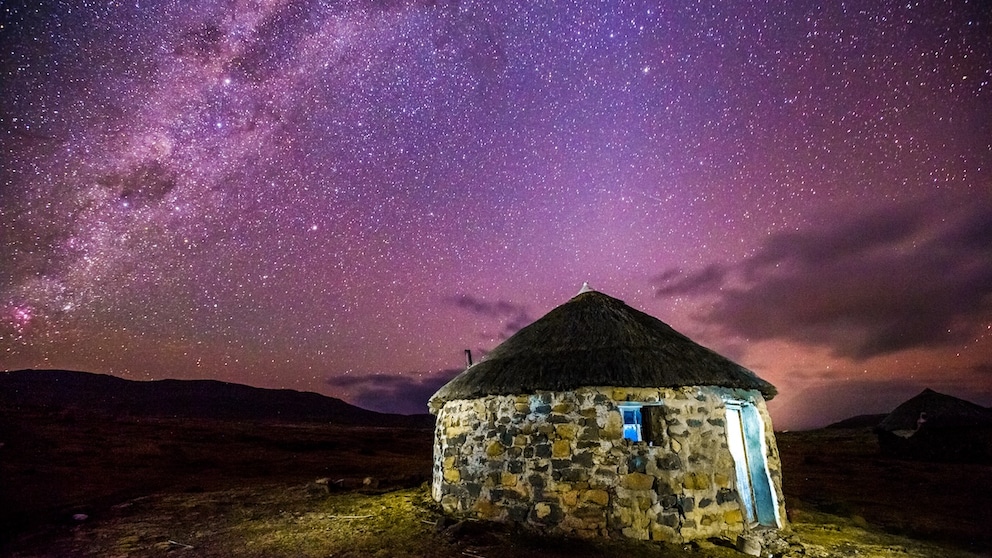April 23, 2025, 9:00 am | Read time: 4 minutes
“The Kingdom in the Sky”—that’s what the people of Lesotho call their country. While it may sound like the title of a fairy tale at first, it gains credibility when you consider that Lesotho is situated at least 4,600 feet above sea level, and in some areas, even over 6,500 feet. The name remarkably fits the reality. TRAVELBOOK introduces this African nation and highlights what makes it so unique.
With an area of 30,360 square kilometers, Lesotho is so small that it could easily be overlooked—especially since it is completely surrounded by its vast neighbor, South Africa. Only about 270 kilometers from Durban, this kingdom is tiny in size but magnificent in nature. Major rivers such as the Orange and the Caledon originate here. The landscape is characterized by deep gorges, impressive waterfalls, expansive high plateaus, and mighty mountains—though with few trees. The country is traversed by the Drakensberg, known in Lesotho as the Maloti Mountains.
Overview
Lesotho also stands out climatically from the image many associate with Africa. Winter—on the Southern Hemisphere between June and August—often brings snow. The temperature fluctuations are remarkable: While daytime temperatures can reach up to 30 degrees Celsius, nighttime temperatures often drop to minus 15 degrees. Precipitation is equally extreme: While summer brings most of the moisture, winter remains largely dry.
Lesotho Offers a Diverse Natural Landscape
Nature enthusiasts are particularly drawn to Lesotho—a country that was once known as Basutoland and was a British crown colony from 1884 to 1960. Today, it is a parliamentary monarchy with King Letsie III as the head of state. Visitors can explore the Sehlabathebe National Park in the southeast, which impresses with vast grasslands and striking sandstone formations, or hike through the Maloti or Drakensberg mountains.
Afri-Ski in Lesotho Offers Winter Sports in Africa
At an altitude of 3,030 meters, a particularly popular destination for adventurers in Lesotho can be found. Here, you can ski at the Africa-Ski Resort. It is the only commercial ski area in the region, nestled in the stunning mountain landscape.
It offers winter sports opportunities in a climate unusual for Africa and caters primarily to nature-loving travelers seeking the extraordinary. A groomed slope with a chairlift, a snow park, and accommodations with local flair provide a unique experience. Even the journey via the spectacular Sani Pass, which can only be traversed with four-wheel-drive vehicles, makes a ski vacation in Lesotho an adventure of a special kind.

Other Highlights in Lesotho
The capital Maseru, with around 200,000 inhabitants, is another frequently visited travel destination. From here, there are flight connections to Johannesburg. Cultural highlights include the historic fortress Thaba Bosiu in the northwest, the 185-meter-high Katse Dam, and the spectacular Sani Pass—one of the steepest mountain passes in the world. The nearly 2,900-meter-high crossing overcomes about 1,300 meters in elevation over a distance of just five kilometers. Since the road is not paved, entry via this pass is only allowed with four-wheel-drive vehicles.
In general, having your own vehicle is recommended if you want to travel around Lesotho individually. Public transportation is poorly developed, and there is only one railway line connecting Maseru with South Africa. Many roads are unpaved, making off-road vehicles particularly useful.


This Mountain Range Is as Beautiful as the Alps—Only Cheaper and Less Crowded!

This Country in Europe Is Still a Well-Kept Secret for Nature Lovers

These 7 ski resorts in Europe are still hidden gems
Travel Advice for Lesotho
Important to know: Lesotho is one of the poorest countries in the world. The German Foreign Office accordingly advises increased vigilance. Although the domestic political situation is currently stable, spontaneous demonstrations can occur and should be avoided. The crime rate, especially in the capital Maseru, is high.
Travelers must expect violent crime such as robberies or burglaries—both during the day and at night. Walks and drives after dark should be avoided, vehicles should not be parked on poorly lit streets, and valuables should be carried discreetly. Paying as cashless as possible, keeping important documents safe, and refraining from resistance in the event of an attack are recommended.
Text contribution: Silke Böttcher

